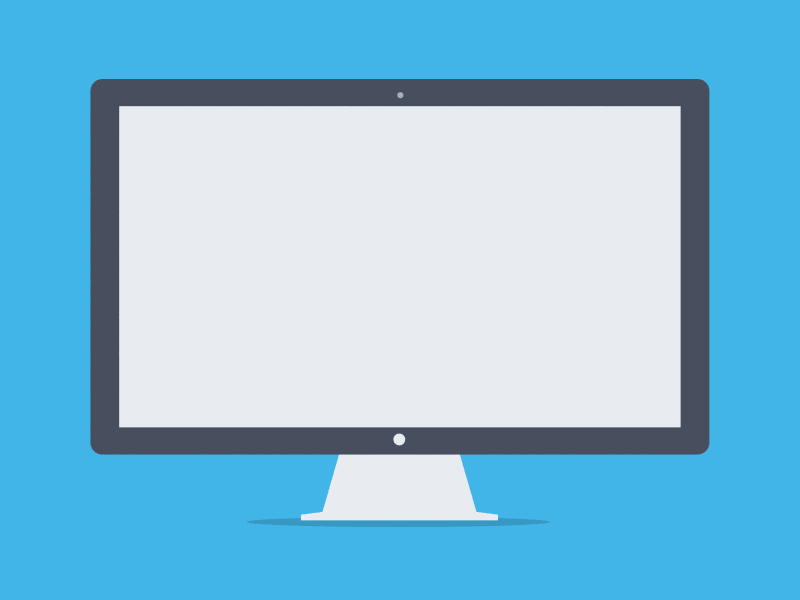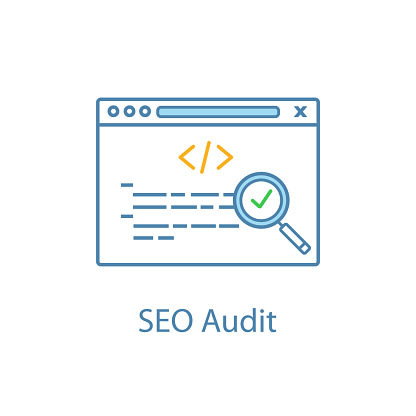First impressions count – your website is the first thing people will see. They can size up your business within seconds upon landing on your page. How would you want to make a lasting positive impact on your audience in these first few seconds? If your website features look outdated or unappealing, it can leave a negative impression. If they don’t find your website appealing, they will go, and you’ll miss out on prospective leads.
Web design is essential because it primarily impacts how your target audience perceives your brand. The impression you make on them can either get them to stay on your page and learn more about the products/services you offer or leave your page for a competitor’s site. A good web design helps you keep leads and turn them into profit. This article gives you ten web design mistakes to avoid when designing your website.
10 Most Common Web Design Mistakes to Avoid
There’s no better time to reassess your website strategy than right now. We’ve compiled these 10 common web design mistakes so you can avoid them.
1. Domain

Your domain is your website name. It is the address where users can access your website. Domain names were developed and used to quickly identify or go to web pages rather than using IP addresses. Your domain name can be any combination of letters and numbers. You can also use it with various domain name extensions, such as .com, .net, .sg, etc. First, you must register your domain name before using it. Keep in mind that every domain name is unique. It’s not possible that two websites will have the same name. For more information, you may read this domain names blog.
Web design mistakes to avoid:
The registered person must be contactable or should find a reliable company to do it, else risk domain renewals or transfers in the future.
Lack of information. It’s important to know the difference between .com vs .com.sg or .sg, and what to name it. (“.com” = international company, “.sg” = local service provider)
Tip: Ensure that your domain aligns with your branding and business goals.
2. Hosting
Generally, web hosting is a service that allows organisations and individuals to put up a website or web page on the internet. Hosting is a service provided by a provider that builds a specialised backend computing infrastructure. The website owner/developer utilises this infrastructure to host its website through an uploaded source code. Each website is assigned its unique domain name. After creating a domain name in a web browser, you can now access the website online.
With technology and delivery models evolving constantly, hosting has evolved into various formats, including shared hosting, VPShosting, dedicated hosting and cloud hosting. Find out more about the different types of web hosting.
Web design mistakes to avoid:
Restricted hosting access. Avoid paying for the service but not having the details to own or edit the site.
Reseller fee. Keep a lookout for marked-up hosting fees from web agencies and web hosting providers. Always clarify what you are paying for.
Specifications and services. Take note of specifications and services differences. Servers specifications from Singapore, Australia, are comparable; however, the service is different (e.g. AI or personalised)
Buying insufficient or overqualified hosting (e.g. pay extra but the server is under utilised)
You are paying extra for migration fees to a new server.
Tip: Price may not include everything, so read through inclusions carefully.
3. Email

New communication forms may emerge daily, and email may be considered old-fashioned. But it definitely won’t be forgotten any time soon. Emails are still succeeding in playing a vital role in businesses worldwide. Emailing services are adjusting well to today’s fast-paced communication channels with continuous improvements of spam filters, easy-to-use platforms, ways to categorise and prioritise your messages, all to meet your needs of having fast and effective communication.
Web design mistakes to avoid:
Underestimating the importance of emails.
Disjointed email and domain name.
Not having a backup. Thus, it’s good to have a cloud & backup server for email correspondence.
Tip: Email should be consistent with your business domain. You can consider Google workspace as an all-in-one platform for your business.
4. Copywriting

Copywriting is proven to be one of the essential aspects of an effective web design. Landing on a new website with an appealing design may attract prospective customers, but having content is what will make your site visitors stay and surf your website. Your website needs eCommerce copywriting that converts visitors to customers.
Web design mistakes to avoid:
You are overusing bullet points. Using these may make you seem unprofessional, especially when you’re writing in incomplete sentences. Make sure that you write in complete but succinct sentences that the reader can easily understand.
Inconsistent Writing Structure. Establish a uniform writing tone and structure for your website’s blog.
Content that is lengthy or contains too much technical jargon.
Absence of Internal Linking/Backlinks. Internal links make it easier for Google to navigate your site and more accessible for users to navigate your content. Adding internal links/backlinks is helpful for your website in terms of visibility.Your website is not optimised for the web. Make sure that content is optimised for SEO and conversions.
Tip: Go one step ahead and get a Copywriter. A professional copywriting service is essential if you want to build your brand. Remember that while visuals draw a prospective customer’s attention, the message makes them think and persuades them to act.
5. Web Design

As mentioned earlier, an appealing and user-friendly website is vital for converting customers. Your website is just as important as a traditional brick and mortar store. Except it never closes and is always available to site visitors. A website should showcase your brand and successfully sell or inform visitors 24/7.
When designing your website, a few aspects are more important than the others. A good design includes white space, colour, navigation, positioning, mobile-friendly interface, typography, and usability.
Web design mistakes to avoid:
Web agencies are not obligated to show you their portfolio. Ask the agency if you may see their recently launched projects.
Wanting the best or unique design instead of choosing a design that best suits your brand. A unique design that you may prefer may not be ideal for your branding. Instead of overly focusing on individual design elements for your website, focus on how website design should complement and showcase your branding professionally.
Tip: Collate a design brief. A web design brief is a document that defines the details of a web design project. It's also known as a “web design questionnaire”. Its primary purpose is to extract as much information as possible to help the designers have a detailed understanding of your business and the industry it belongs to.
6. Programming
Every business owner designer wishes to implement a combination of design and functionality in their site. We’ve tackled design earlier, so this is where functionality comes in and why it’s crucial to hire web design and programming experts.
Web designers use their creative and software programming skills to design, build and improve websites. They understand user experience and can create easy-to-understand, navigate, and use websites. It takes time to test and ensure that everything runs smoothly before it goes live.
Web design mistakes to avoid:
Changing design aspects of the website (e.g. font/theme colour and layout) during programming.
Decide on the design aspects before the programming stage so that the web development process can be smooth and seamless.
Tip: Trust that your web developer and designer will deliver the right website according to your brief. It’s essential to develop this trust to maintain an effective, efficient and harmonious work interaction between you and the web design agency you’ve chosen.
7. User Acceptance Test (UAT)

User acceptance testing or UAT determines if a system satisfies its users’ needs and fits the business requirements. It is crucial for any successful launch or maintenance of any online platform. From mobile apps to full-scale eCommerce sites, UAT ensures that your platform is performing as expected and whether the user accepts the finished product.
Web design mistakes to avoid:
Lack of system availability and stability.
Lack of resources (for testing to support web agency)
Tip: Proactively monitor your website and have a contingency plan.
8. SEO

SEO stands for Search Engine Optimisation. It’s the practice of increasing both the quality and quantity of website traffic. It also gives exposure to your brand, through non-paid or organic search engine results.
SEO is about understanding what people are searching for online, the answers they want to get, the keywords they are using, and the type of content they want to see. Getting the answers to these questions will allow you to connect to the people searching online for the solutions or products you offer.
Web design mistakes to avoid:
The assumption is that it is easy to bring your website on the First Page of Google or other search engines. It’s not easy, and that is why you need a strong SEO strategy to keep your business relevant.
Not understanding Google’s algorithm. (If other websites have more quality backlinks than you, then Google will rank them higher due to relevance and authority.)
Tip: A good business website is always a work in progress. Your website needs to keep improving and stay ahead of the competition. Through uploading new photos, new content and uploading articles frequently, you are signalling to Google that your website is updated constantly and brings value to your viewers.
9. Maintenance & Security

Your website’s maintenance and security are necessary to protect all your data from theft and damage. You may not think your site will be a target, but websites are frequently compromised.
Most website security breaches are not only to steal your data or mess with your website layout. There can also be attempts to use your server as an avenue to send spam emails or as a temporary web server used for illegal transactions. Find out more reasons why web maintenance is important in this article.
Web design mistakes to avoid:
- Assuming that small businesses are less likely to be hacked. Not knowing what viruses and malware are, how plugins are vulnerable to viruses, etc.
Tip: Prevention is better than cure – It’s worth having a whole website backup (this can take less than 30 mins) and investing in regular maintenance and security checks.
10. Advertising & Promotion

You can have the best website in the world, but without an effective advertising and promotion strategy, no one will know about it. Website promotion will help increase traffic to your website, leading to increased sales and established brand identity.
Web design mistakes to avoid:
Thinking that it’s just additional expenses. Seize this opportunity to invest in your business and gain more awareness & leads that could result in conversions. Take on this challenge and see for yourself.
The “I can do Google Ads myself” mentality. There is a lot of technical jargon to understand, so you will need experts for this task to save time and money in the long run.
Tip: Invest in website advertising and promotion to engage with customers through digital marketing. This ensures quality traffic to your website and eventually converts them to sales.









Top comments (0)